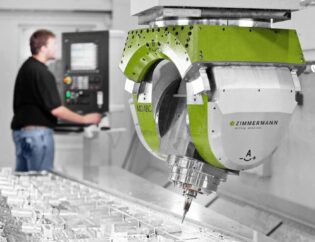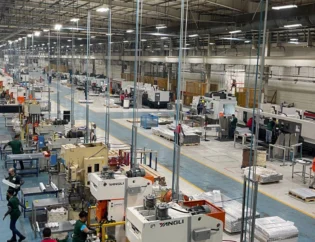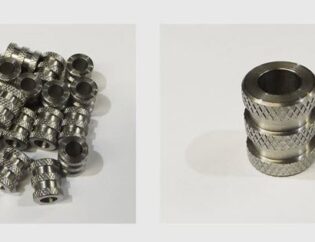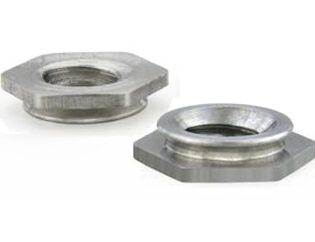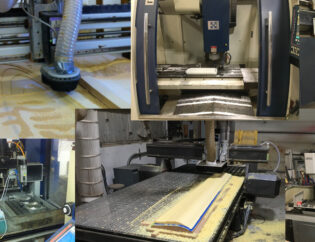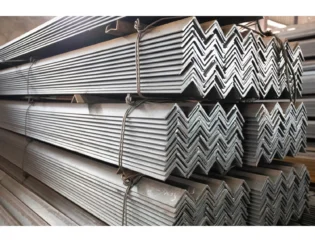In the world of manufacturing and design, CNC foam milling has emerged as a revolutionary technique that transforms creative ideas into tangible products. This guide delves into the intricacies of CNC foam milling, highlighting its significance in various industries, from prototyping to artistic applications.
Readers can expect to gain a comprehensive understanding of the technology, including its operational principles, benefits, and best practices. By the end of this guide, you will be equipped with the knowledge to harness CNC foam milling effectively for your projects.
Comprehensive Guide to CNC Foam Milling
When it comes to complex and detailed foam cutting, the 5-axis CNC foam cutting machine is revolutionizing industries by offering unparalleled precision, versatility, and efficiency. Whether you’re crafting intricate foam prototypes, architectural models, or other custom designs, these advanced machines deliver exceptional results. So explore the benefits, capabilities, and applications of 5-axis CNC foam cutting and how it can be leveraged for foam milling and other precision tasks is very important.
Understanding CNC Foam Milling
CNC (Computer Numerical Control) foam milling is a process that utilizes computer-controlled machines to cut and shape foam materials with high precision. This technology has transformed the way industries approach foam fabrication, allowing for intricate designs and efficient production. CNC foam milling machines can handle various materials, including expanded polystyrene (EPS), polyurethane, and other foam types.
Technical Features of CNC Foam Milling Machines
The technical features of CNC foam milling machines are crucial for determining their performance and suitability for specific applications. Below is a comparison table highlighting key technical features of different CNC foam milling machines.
| Feature | 3-Axis CNC Foam Mill | 5-Axis CNC Foam Mill | Hybrid CNC Foam Mill |
|---|---|---|---|
| Axes of Movement | 3 | 5 | 4 |
| Cutting Precision | ±0.1 mm | ±0.01 mm | ±0.05 mm |
| Material Compatibility | Foam only | Foam, Wood, Acrylic | Foam, Wood, Metal |
| Max Cutting Speed | 300 mm/s | 600 mm/s | 400 mm/s |
| Software Compatibility | Basic CAD/CAM | Advanced CAD/CAM | Intermediate CAD/CAM |
| Typical Applications | Basic Prototyping | Complex Designs | Versatile Applications |
| Cost Range | Low to Medium | High | Medium to High |
Types of CNC Foam Milling Machines
CNC foam milling machines come in various types, each designed for specific applications and materials. Below is a comparison table of different types of CNC foam milling machines.
| Type | Description | Ideal For |
|---|---|---|
| 3-Axis CNC Foam Mill | Basic machine with three axes of movement for simple cuts. | Prototyping and basic designs. |
| 5-Axis CNC Foam Mill | Advanced machine with five axes for complex shapes and angles. | Intricate designs and detailed work. |
| Hybrid CNC Foam Mill | Combines features of both 3-axis and 5-axis machines for versatility. | Multi-material projects. |
| Portable CNC Foam Mill | Compact and mobile, suitable for on-site work. | Fieldwork and small projects. |
| Industrial CNC Foam Mill | Heavy-duty machines designed for high-volume production. | Large-scale manufacturing. |
Benefits of CNC Foam Milling
CNC foam milling offers numerous advantages over traditional foam cutting methods. Here are some key benefits:
-
Precision and Accuracy: CNC machines provide high precision, ensuring that every cut is exact and consistent. This is particularly important in industries like aerospace and automotive, where tolerances are critical.
-
Flexibility in Design: The ability to create complex shapes and contours allows for greater creativity in design. Whether for architectural models or custom prototypes, CNC foam milling can accommodate various design requirements.
-
Efficiency: CNC machines can operate continuously, reducing production time and costs. The automation of the cutting process minimizes human error and speeds up the overall workflow.
-
Versatility: CNC foam milling machines can work with different materials, including various types of foam, wood, and plastics. This versatility makes them suitable for a wide range of applications.
-
Ease of Use: Modern CNC machines come with user-friendly interfaces and software, making it easier for operators to design and execute complex cuts without extensive training.
Applications of CNC Foam Milling
CNC foam milling is utilized across various industries, each benefiting from its precision and efficiency. Here are some common applications:
– Prototyping: Designers and engineers use CNC foam milling to create prototypes quickly, allowing for rapid testing and iteration of designs.
– Model Making: In architecture and film production, CNC foam milling is essential for creating detailed models and props, turning digital designs into physical representations.
– Custom Foam Parts: Industries requiring bespoke foam parts for packaging, insulation, or cushioning can leverage CNC foam milling for tailored solutions.
– Art and Sculpture: Artists use CNC foam milling to carve intricate designs into foam blocks, producing large sculptures and installations with precision.
Conclusion
CNC foam milling technology has transformed the way industries approach foam fabrication. With its precision, flexibility, and efficiency, CNC foam milling machines enable the creation of complex designs and customized foam products that meet the demands of modern markets. Whether you are involved in prototyping, model making, or custom foam milling, investing in a CNC foam cutting machine can significantly enhance your production capabilities.
FAQs
1. What is the difference between 3-axis and 5-axis CNC foam milling machines?
3-axis machines can only move along the X, Y, and Z axes, while 5-axis machines add two rotational axes, allowing for more complex cuts and angles.
2. Can CNC foam milling machines work with materials other than foam?
Yes, many CNC foam milling machines, especially 5-axis and hybrid models, can work with materials like wood, acrylic, and even some metals.
3. How does CNC foam milling improve production efficiency?
CNC foam milling automates the cutting process, reducing the need for manual setups and allowing for continuous operation, which speeds up production times.
4. What industries benefit from CNC foam milling?
Industries such as aerospace, automotive, architecture, film production, and custom packaging all benefit from the precision and versatility of CNC foam milling.
5. Are CNC foam milling machines easy to operate?
Modern CNC machines are designed with user-friendly interfaces and software, making them accessible even to those with limited experience in CNC technology.



